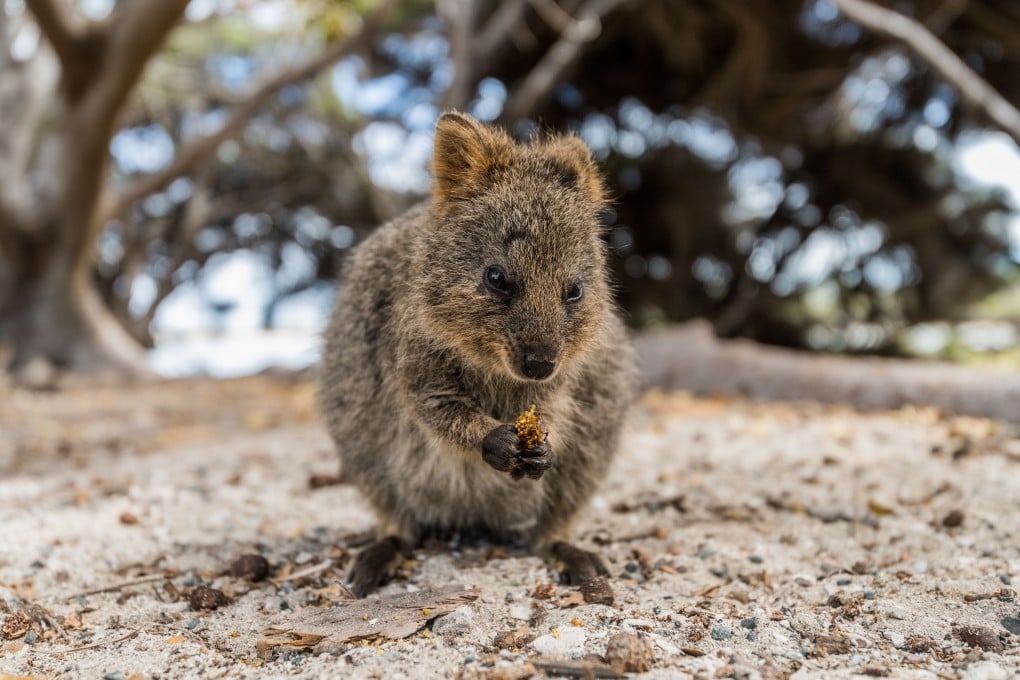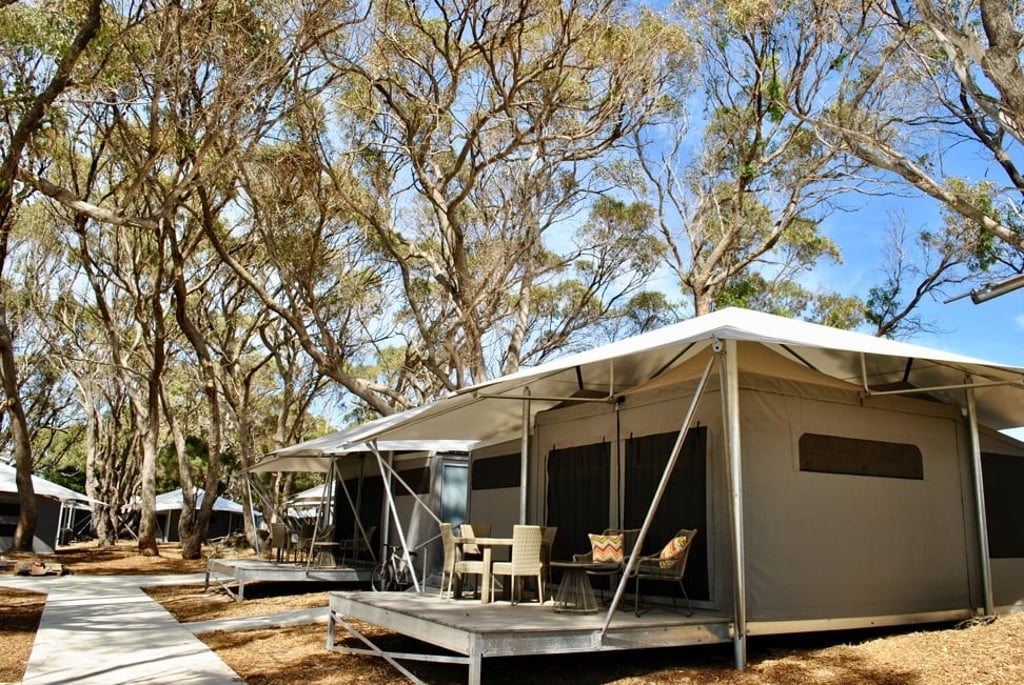Discover Western Australia’s pride and joy: Rottnest Island and its cute quokkas
- Discovery Rottnest Island is the newest accommodation option on the island to the west of Perth
- With sustainability at its core, the resort is committed to preserving the unique environment of the rare marsupial

What is it? Rottnest Island (locally known as “Rotto”) is 19km and a 25-minute ferry ride west of Perth. It is Western Australia’s pride and joy, with more than 60 shimmering beaches and Indian Ocean water almost clear enough to drink.
Discovery Rottnest Island, which opened on March 1, is Rotto’s first glamping resort, nestled behind the sand dunes with direct access to sheltered swimming spots Pinky Beach and the Basin. The resort consists of 83 eco-tentswith en-suites and decks – most include a kitchenette. There is also a 30-metre pool and a beach club restaurant and bar. As the first new accommodation to open on the island in 30 years, Discovery is kind of a big deal.
Why now? Rottnest Island is an “A-class”reserve, controlled by the government of Western Australia, and its popularity grows yearly, with 769,000 visitors in 2018. This growth, partly attributed to the Instagram-appeal of quokkas (a rare, cute marsupial), meant the available accommodation was always fully booked in summer. To alleviate the pressure, the government sought proposals for something new and Discovery won the bid with its commitment to preserve Rotto’s unique environment and heritage.
How will they achieve that? Tents are slightly raised so that wildlife can pass underneath, and bathrooms and kitchenettes were prefabricated, to minimise construction disturbance. Foot traffic is restricted to boardwalks, helping prevent erosion, and the resort has been arranged to preserve mature trees.Another 13,000 native plants will be introduced over the rainy winter season, from June to August, to stabilise previously degraded dunes.

Minimising power consumption is paramount and the resort taps into the existing solar and wind supply –on average, 45 per cent of the island’s power is generated through renewable sources. Ceiling fans and natural breezes cool the tents and treated waste water will be used for irrigation. Aboriginal heritage is not forgotten, and signs relate to guests the Whadjuk Noongar people’s stories of Rottnest.
What’s the Rottnest vibe? Most Western Australians have a Rottnest story. Childhood memories of car-free Rotto include free-ranging on bikes and a bakery meat pie for lunch. Discovery’s local owners have these memories, too, and sought to preserve that free-and-easy family vibe.
